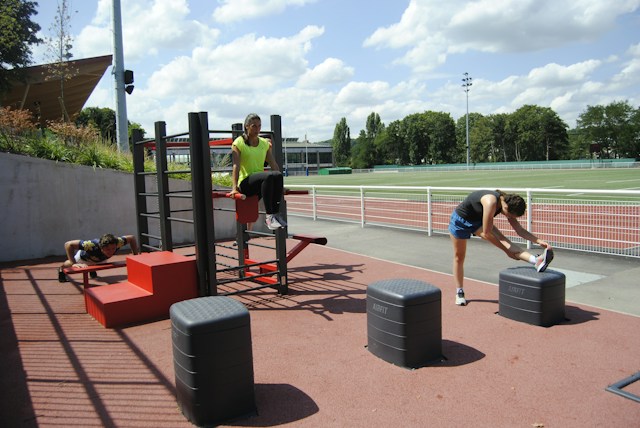Running is a fantastic way to stay active, improve cardiovascular health, and challenge your limits. However, if you’re a beginner runner, you might wonder if there’s more you can do to enhance your performance, avoid injuries, and make the most of your running journey. The answer lies in incorporating strength and conditioning exercises into your routine. In this guide, we will explore why strength and conditioning are vital for beginner runners and provide you with practical tips to get started effectively.
Table of Contents
Benefits of Strength and Conditioning for Beginner Runners
1. Enhanced Running Performance
Strength and conditioning exercises can significantly improve your running performance. Running requires a combination of muscular strength, endurance, and stability, and strength training helps develop these qualities. As a beginner, you’ll find that these improvements translate into increased running speed and better overall stamina.
2. Injury Prevention
Running can be tough on your body, especially if you’re starting. One of the significant benefits of incorporating strength and conditioning exercises is injury prevention. Strengthening the muscles that support your joints and improving your overall body mechanics can reduce the risk of common running injuries such as shin splints, knee pain, and stress fractures.
3. Improved Running Form
Effective running form is essential for both injury prevention and performance. Strength training can help you build the muscles for proper posture and alignment during your runs. As a result, you’ll be able to maintain better form, which can lead to increased efficiency and less fatigue.
Setting the Foundation: Tips for Getting Started
1. Consult a Healthcare Professional
Before embarking on any new exercise program, it’s crucial to consult with a healthcare professional, especially if you have any underlying health conditions or concerns. They can help determine if you have any specific needs or limitations that should be considered when designing your strength and conditioning program.
2. Choose the Right Exercises and Equipment
As a beginner, it’s important to focus on safe and effective exercises. Bodyweight exercises like squats, lunges, planks, and push-ups are excellent choices for building strength without requiring specialized equipment. However, if you have access to a gym or basic equipment like dumbbells, you can also incorporate those.
3. Emphasize Proper Form and Technique
Proper form and technique are essential to get the most out of your strength and conditioning workouts while minimizing the risk of injury. Start with lighter weights or resistance and focus on perfecting your form before increasing the intensity. Consider working with a fitness professional or trainer to ensure you’re performing exercises correctly.
Designing a Beginner-Friendly Strength and Conditioning Program
1. Establish a Routine
Consistency is key when it comes to strength and conditioning. To start, aim for two to three sessions per week. Allow your body time to adapt, and gradually increase the frequency and intensity as you become more comfortable with your routine.
2. Include a Variety of Exercises

A well-rounded program should target various muscle groups. Include exercises that work on your legs, core, upper body, and back. Some beginner-friendly exercises to consider include:
- Squats
- Lunges
- Planks
- Push-ups
- Glute bridges
- Dumbbell rows (if you have access to weights)
3. Balance Strength and Conditioning
While strength training is essential, remember conditioning exercises. Incorporate cardiovascular activities like cycling, swimming, or brisk walking to improve your overall endurance. These activities complement your running and help build cardiovascular fitness.
Nutrition Tips to Support Strength and Conditioning
1. Prioritize Protein Intake
Protein is essential for muscle repair and growth. Ensure you’re consuming enough protein to support your strength and conditioning efforts. Lean protein sources like chicken, fish, beans, and tofu are great options.
2. Stay Hydrated
Proper hydration is vital for overall performance and recovery. Drink plenty of water throughout the day, and consider sports drinks for longer workouts to replenish electrolytes lost through sweat.
3. Eat a Balanced Diet
A well-balanced diet that includes carbohydrates, protein, healthy fats, fruits, and vegetables provides the necessary nutrients for optimal performance and recovery. Avoid excessive processed foods and sugary snacks.
Common Mistakes to Avoid
1. Overtraining
While consistency is crucial, overtraining can lead to burnout and injuries. Listen to your body, and don’t push yourself too hard too soon. Allow for adequate rest and recovery between workouts.
2. Neglecting Rest and Recovery
Rest days are essential for muscle repair and growth. Schedule regular rest days into your training program to avoid overuse injuries.
3. Ignoring Flexibility and Mobility
Strength and conditioning shouldn’t be limited to lifting weights. Incorporate stretching, yoga, or mobility exercises into your routine to improve flexibility and range of motion, enhancing running performance and reducing the risk of injury.
Incorporating Flexibility and Mobility Work
1. Stretching
Incorporate dynamic stretching before your workouts to improve blood flow and static stretching after workouts to enhance flexibility. Focus on key muscle groups used in running, such as the calves, quadriceps, hamstrings, and hip flexors.
2. Yoga
Yoga is an excellent way to improve flexibility, balance, and body awareness. Add a weekly yoga session to your routine to help with recovery and injury prevention.
3. Foam Rolling
Foam rolling can help release tight muscles and reduce muscle soreness. Use a foam roller to target areas that tend to get tight, such as the IT band and quadriceps.
Staying Motivated and Tracking Progress
1. Set Realistic Goals
Set achievable goals for your strength and conditioning program. Whether it’s increasing the weight you lift or the number of push-ups you can do, having clear goals can help keep you motivated.
2. Find a Workout Buddy
Working out with a friend or joining a running group can provide accountability and make exercise more enjoyable. Sharing your fitness journey with others can be motivating and fun.
3. Track Your Progress
Keep a workout journal or use fitness tracking apps to monitor your progress. Tracking your workouts, weights lifted, and improvements in endurance can be incredibly motivating.
Conclusion
Incorporating strength and conditioning exercises into your routine as a beginner runner can significantly enhance your running experience. It’s about improving your performance, preventing injuries, and ensuring long-term success. By following these tips and staying committed to your fitness journey, you’ll be well on your way to becoming a stronger and more resilient runner.
Featured Photo by Fitsum Admasu on Unsplash




